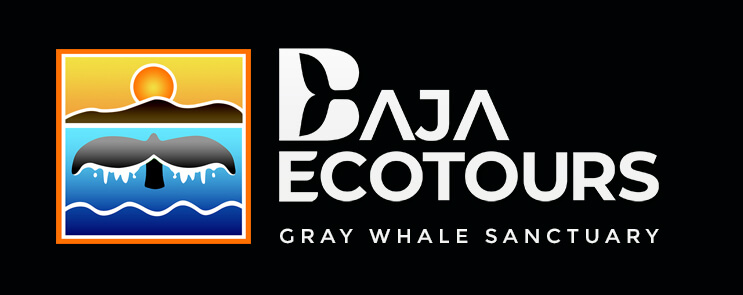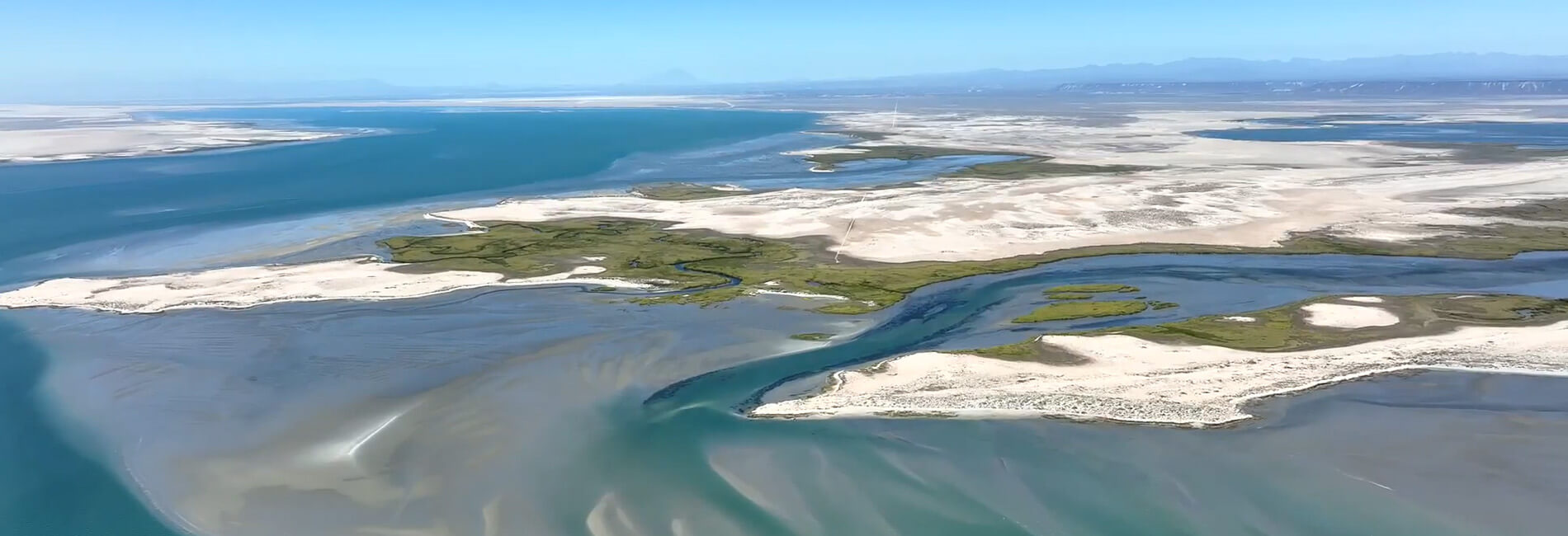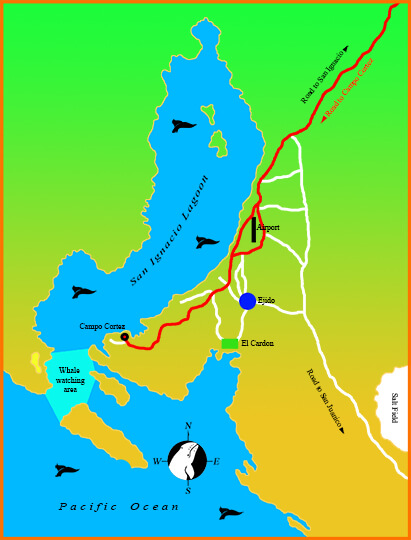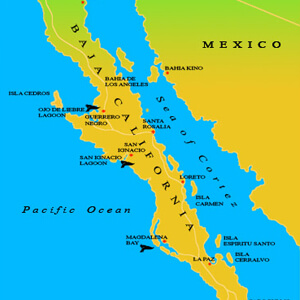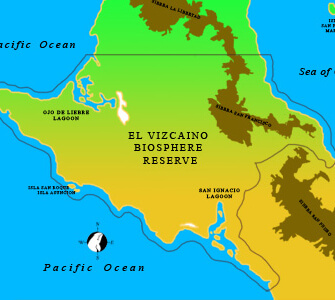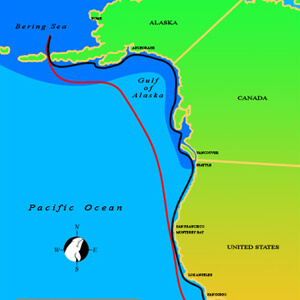Map of the San Ignacio Lagoon
The Friendly Whales of San Ignacio Lagoon
San Ignacio Lagoon
Unique only to Laguna San Ignacio, Baja, California Sur, Mexico
San Ignacio lagoon was originally discovered by whaling captain Jared Poole, brother-in-law to captain Charles Mellville Scammon who is well known for exploiting the breeding lagoons of the Gray Whales. The first whaling expedition to San Ignacio Lagoon occurred in 1860 led by Scammon and six whaling vessels. Although many whaling captains would not risk losing their ships to the treacherous sand bar shoals and narrow shallow water passage into the lagoon, enough bold whaling captains did and the beginning of the near extinction to the Eastern Pacific Gray Whales was on its way.
Facts About San Ignacio Lagoon
The lagoon is located 59 kilometers (36 miles) from San Ignacio and Hwy.1. With a local community of less than 100 inhabitants, the lagoon residents depend primarily upon fishing and now whale watching as their primary means of support. The lagoon stretches into the desert by about 16 miles and has a maximum width of five miles. The lagoon is divided into three sections. The upper lagoon is the shallowest part and is known as the birthing area where pregnant females travel to bear their young. At the middle lagoon you find mothers traveling with their newborns as the tides flow in and out getting their calves ready to join the majority of the whales at the lower lagoon. At the lower lagoon, you find the majority of the cetaceans, and this is where most of the social behavior occurs. Here, males and females congregate looking for mates. In addition newborn calves with their mothers travel the length of the lower lagoon preparing themselves for the long journey north to their summer feeding grounds in the Arctic.
San Ignacio Lagoon's Significance to the World Community
In 1988 Mexico established the Vizciano Biosphere Reserve to include San Ignacio Lagoon, which is Latin America’s largest wildlife sanctuary. Not only is San Ignacio lagoon a Gray Whale Sanctuary, but it is the last and only undeveloped nursery and breeding ground in the world of the Pacific Gray Whale. San Ignacio Lagoon is also the critical habitat for the near extinct prong-horned antelope and an important feeding habitat for four of the world's seven species of sea turtles: Leatherbacks, Hawksbills, Green Turtles and Olive Ridleys (all endangered). In 1993 the United Nations declared San Ignacio Lagoon a World Heritage site because of its importance to the world community.

